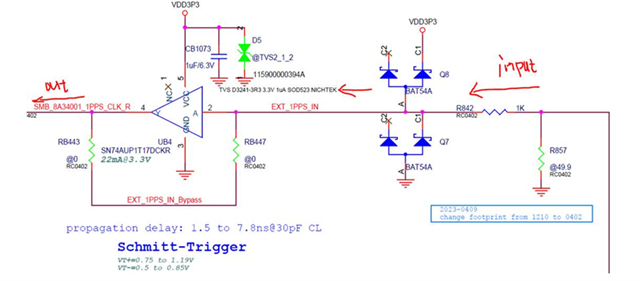Other Parts Discussed in Thread: SN74AUP1T17
Dear Team,
Any advice for the comparator design about TLV3501?
Regarding the sqr2sine design, we found a lots of harmonics at 30/50/70/90Mhz when using square as output waveform, and it also caused EMI radiation emission failure. It would a solution to replace with sine wave, and these harmonics will be eliminated. Following is our expected structure.
Source -> 3.3V square wave clock @10MHz -> sqr2sine circuit -> 5V sine wave clock @10MHz -> SMB connector -> external cable
Many Thanks,
Jimmy


